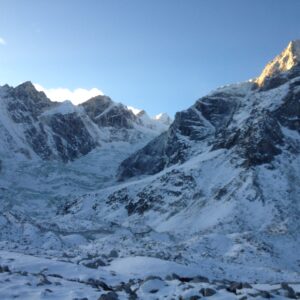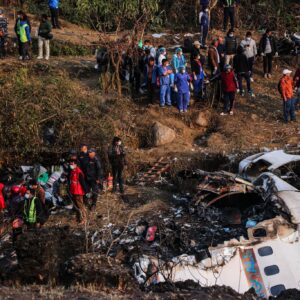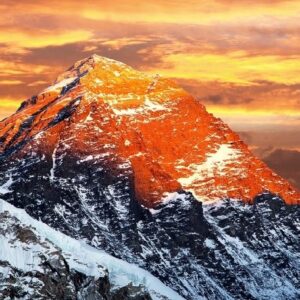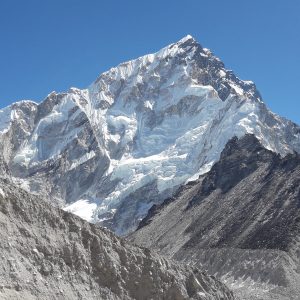
Sherpa Peoples
 25 Jan, 2019
25 Jan, 2019
About Sherpa Peoples
Sherpa peoples are an ethnic group of people who reside in the mountains of Nepal, central Asia. Sherpa is an easterner indigenous people, living in the eastern part of Nepal. The word Sherpa is combined with two words – “Shyar” (east), “pa” (people), which denotes people of the east, and these words are coined from the Tibetan language. About 3000 of Nepal’s more than 10,000 Sherpa people reside in the Khumbu Valley, the gateway to the southern side of Mount Everest. Tengboche is known as the oldest Sherpa village in Nepal.
In other countries like China, Bhutan, and the Indian states of Sikkim and the northern portion of West Bengal, Sherpa people also reside. The language of Sherpa people belongs to the south beach of the Tibet-Burman language, and it is a mix of eastern Tibet (Khamba) and central Tibetan dialects. So, this is a separate language from Lhasa Tibetan and unintelligible to Lhasa speakers. In recent years, the number of Sherpa people migrating to western countries has significantly increased, especially in the United States. In New York City, the population of the Sherpa community is approximately 3,000.
Sherpas are also known as the backbone of climbing expeditions. In the most recent sense, the term refers to a variety of ethnic groups in the region who have exhibited excellent trekking skills and mountaineering skills. As Sherpas have accepted mountaineering as a way of life, they never let down their respect for the mountains. From the fear of God, they have attempted to prevent foreign climbers from engaging in profaning activities like polluting, such as killing animals and burning garbage.
Various expeditions weren’t attempted until 1953, when Edmund Hillary and Sherpa Tenzing Norgay managed to reach the 29,028-foot (8,848-meter) peak of Mount Everest. After 1953, most climbers have wanted to achieve the same. As a result, the number of Sherpas serving as guides and porters has increased.
History
The Sherpa people are nomadic. According to the oral history of Sherpa, four groups of Sherpa people migrated out of the Solukhumbu at different time intervals. These four groups gave rise to the four Sherpa clans: Minyagpa, Thimmi, Sertawa, and Chawa. These four groups of Sherpa, which split into more than 20 different kingdoms, still exist today. The Sherpa people of Khumbu attained autonomy within the newly formed Nepali state. After that, the Nepali government influenced the growth of Sherpa People. In 1976, Khumbu became a national park, and tourism became a major economic force. The Nepal Ethnographic Museum recently studied the present-day Sherpa population, which has become an integral part of Nepal. From ancient times, other indigenous people like Sherpa, Kirant, and Nepalese tribes moved from place to place inside the Himalayan region, surviving as alpine pastoralists and traders.
Religion
The Sherpa people belong to the Nyingmapa sect of Buddhism, an ancient school of Buddhism. The Sherpa people, who inhabit the regions surrounding Mount Everest, are well known in the west as a rugged mountain population, following the religious culture of Tibetan Buddhism. In the tribal and clan legend, the origin of the Buddha’s religion among the Sherpa people is lost. However, Sherpa people are relatively young compared to the religion itself. Early in the nineteenth century, Sherpa Buddhism acquired some of the features it has retained today. Shortly before 1850, Sherpa Buddhism adopted its modern form, when a number of Sherpa village priests traveled to Tibet to study with Trakar Choki Wangchuk, a well-known figure from Tibetan biographical and historical literature. Products of literature and erudite religious culture are part of Sherpa tradition. By the growth of Sherpa agriculture and economy, they began to engage in trade, especially with India and Tibet. In the 1890s, the first Sherpa woodblocks for printing books in Nepal were carved in the village of Gole. During the 1960s and 1970s, a rapid cultural deterioration occurred in some communities, but tourism in Khumbu helped revitalize local craftsmanship, which now includes tourist art.
Social Gatherings
The Sherpa community is known for gathering on special occasions to gain favor with the community and neighbors. Invitations are sent out just a few hours before the event. Small children host the party to reduce the chances of rejection. In the gathering, people are seated based on their status, with lower-status people sitting near the door and higher-status individuals seated near the fireplace. Women sit randomly without specific ordering. Typically, beer is served first for several hours, followed by dancing and singing before guests start leaving. The host’s hospitality, including the serving of food and alcohol, is expected to be reciprocated.
Language
The Sherpa people speak a dialect of Tibetan called Sherpa. It has borrowed influences from neighboring languages. The Sherpa people use the Tibetan script for writing. Since not all people living in Nepal understand the Sherpa language, they commonly use the Nepali language for broader communication.
Folklore
Folklore plays a significant role in Sherpa culture. The unique creature called the Yeti is central to Sherpa folklore. Known in the west as the Abominable Snowman, Yetis were once believed to be numerous and were said to hunt humans. According to legend, villagers devised a plan to eliminate them by staging a mock battle and leaving weapons behind. The Yetis, imitating the villagers, accidentally killed each other. As a result, only a few Yetis are said to remain today, and they rarely hunt humans anymore.
Major Holidays
The major festivals of the Sherpa people are Losar, Dumje, and Mani Rimdu. Losar, which falls at the end of February, marks the beginning of the Tibetan New Year. It is celebrated with much feasting, drinking, dancing, and singing. Dumje, celebrated in July, is held for the well-being and prosperity of the Sherpa community. It takes place after agricultural work has finished and trading expeditions to Tibet have returned. Sherpa people visit local monasteries and offer prayers to their gods during this seven-day festival, accompanied by feasting and dancing. Mani Rimdu is another important festival, celebrated four times a year. Monks wear colorful costumes and masks, impersonating gods and demons, and perform religious dances to scare away evil spirits.
Rites of Passage
The naming ceremony of a newborn child is an important event in the Sherpa community. A local Lama, the Buddhist spiritual leader, determines the name and the date of the ceremony based on the time of birth. It is common for Sherpa children to be named after the day of the week they were born, such as Pasang for a child born on Friday. Boys typically undergo an initiation ceremony between the ages of 7 and 9, which is also presided over by a Lama and involves feasting and celebration. The traditional dress for Sherpa people, called Bakkhu, covers the body from head to toe and is made of thick, woolen material.
Living Conditions
Sherpa villages are located on sheer mountain slopes or atop steep escarpments. Villages range from a few houses to larger towns like Khumjung. Houses at higher elevations are typically built in the middle of the owner's field, while in lower elevations, houses are clustered together. Many villages have a community temple, mill, and religious monuments called stupas and Chortens. There are few proper roads, so transportation of goods is done by animals or manually. Sherpa houses are made of heavy stones, with flat roofs and wooden construction. The lower levels are used for livestock, fodder, and storage, while the upper levels hold living quarters. The floors are wooden, and benches are used for sitting and sleeping. A small altar is often included in the house, and lamps are used for lighting.
Family Life
The Sherpa community has numerous clans, and individuals are expected to marry outside their clan. Sherpa clans are divided into two groups, and marrying into a lower-status clan is believed to lower one’s standing. Sherpas choose their own marriage partners, but the process is long and can take several years. Like in South Asia, Sherpa families are typically small.
Employment
The traditional activities of Sherpa people are agriculture and trade. In lower elevations, Sherpas grow maize, barley, buckwheat, and vegetables, with potatoes being the staple crop. Sherpas also raise cattle and yaks, which provide wool and milk for butter. Products like salt, sheep wool, meat, and yaks are brought from Tibet to Nepal in exchange for grains, rice, butter, and manufactured goods. Sherpa people are known as excellent porters and guides on mountain climbing and trekking expeditions, which has brought new income and improved living conditions.
This is all about the Sherpa people of Nepal. They are mostly known as mountain climbers. As they live in snowy places, they often have red cheeks, which adds to their distinctive appearance.





